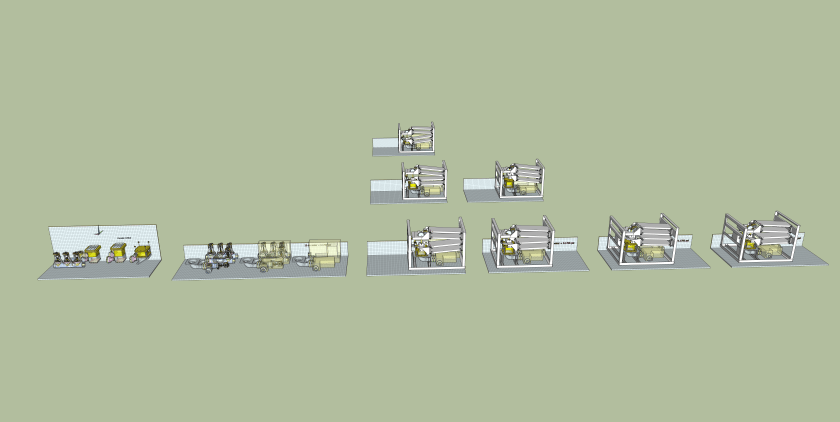Hey everyone, I’m working to design a ventilator that might be helpful in an emergency situation where people are needing a ventilator that is reliable, rugged, simple, and inexpensive. This was a big issue recently, but now seems not to be as important, but it still is an intellectual challenge, and I think it would be a really cool and challenging STEM project.
I created the design of this Ventilator in the 3D drawing program named: SketchupPro 2020. This program saves its drawing files in a *.skp format. If you have Sketchup, then you can download my Sketchup *.skp files that I have below and you can “look around” and study the Ventilator that I designed inside of this 3D drawing program. Enjoy! Dr. Gray

I mention that the image above is a rendered image using KeyShot as the rendering program. I’ll put below the same Ventilator image rendered by the Sketchup program using its native rendering export feature.

I did make a YouTube video about this Ventilator. I sent this YouTube video to my YouTube channel. My YouTube channel is named: Patrick Gray
I had multiple objectives when I created this YouTube video about this Ventilator design. I wanted people who know little about the topic of mechanical ventilation in human patients using normal Western World modern high technology medical care principles to hear and learn about an introduction to what is involved in providing patients with mechanical ventilation as a medical care activity. I wanted any person or group or STEM project type of focus to obtain a very detailed understanding of the design issues that I address for this particular Ventilator, so that they would understand why I chose the design specifics that I chose and also, so that if they chose to make a real version of this Ventilator, they could refer to this video to understand and be clear about the fabrication issues and details that will arise in creating a physically real version of this Ventilator.
The effect of these objectives as I made this YouTube video is that the video is very detailed and it was 4 hours long! Whew! My thoughts are, if you want a detailed understanding of my design considerations for this Ventilator, then I suggest watch the whole video. If you are already conversant with mechanical ventilation as a medical care activity, then just skip all those parts of the video. If you are just browsing the web, watching this and that, then watch the parts of this video that seem interesting to you.
I do mention that the scientific topic of human ventilation as a modern, safe, effective, and reliable medical care activity where desperately sick people can be resuscitated and be brought back to health, well, that’s a huge topic! One could easily fill an entire room floor-to-ceiling, wall-to-wall with textbooks, research papers, and governmental paperwork on this topic. The truth is that a 4 hour video in covering the subject of mechanical ventilation in humans as a modern medical care activity is a tremendous compression of all there is to know about this topic. Dr. Gray



Here is a Sketchup drawing file (70mb) you can download. It shows The Ventilator in various portions of its ventilatory cycle. It allows one to see how it is possible that one can simultaneously and continuously change the ventilatory volume and/or the ventilatory rate and/or the ratio of the inspiratory time interval divided by the expiratory time interval. These issues are more completely discussed in the YouTube video.

I know many people do their 3D work in the Autodesk products, and Sketchup can export its drawing files into a 3D drawing program exchange format (example *.fbx) and one can use these files to import the Sketchup drawing into an Autodesk product, such as Autodesk Maya. I have a page on my website where I have placed some of my Maya project files. I have on that page a Maya project file of this Ventilator. Here’s that page:


You must be logged in to post a comment.